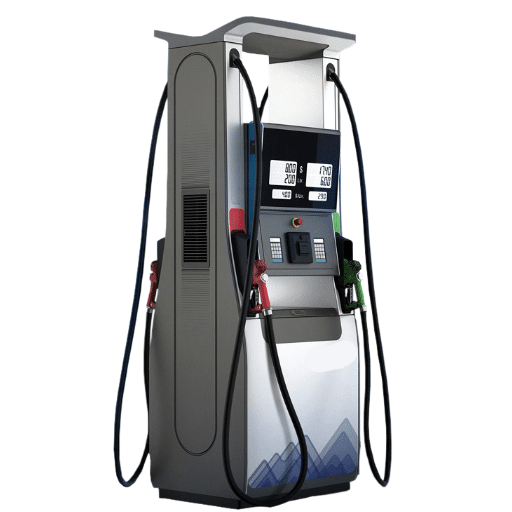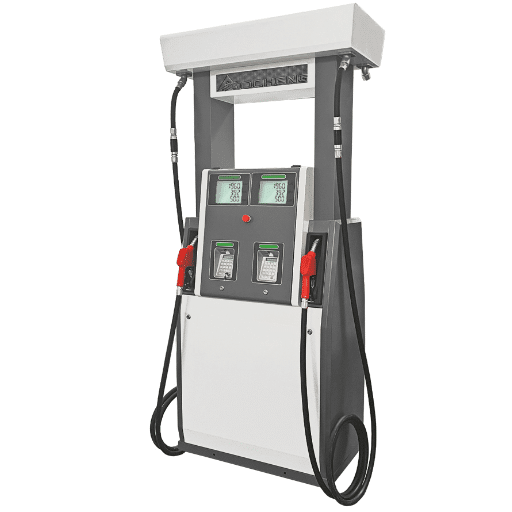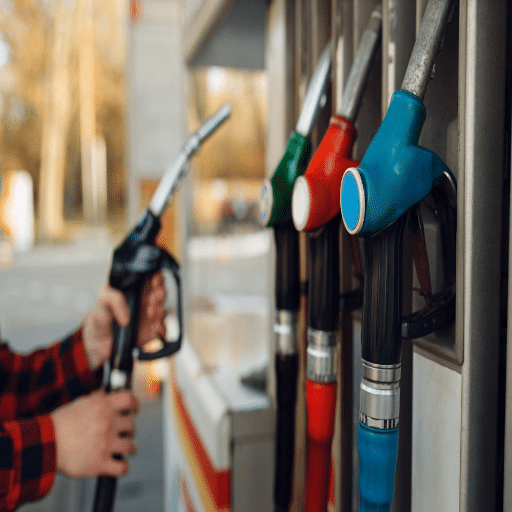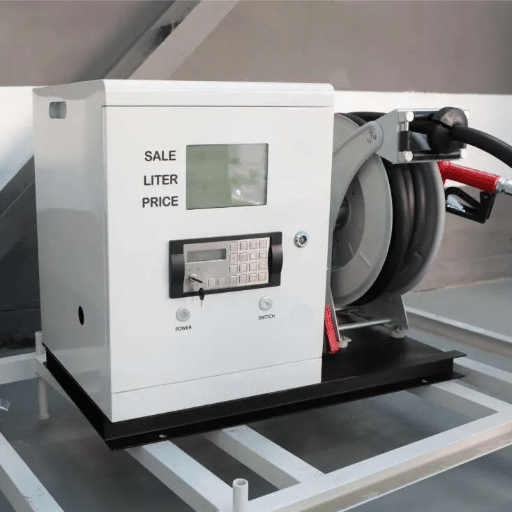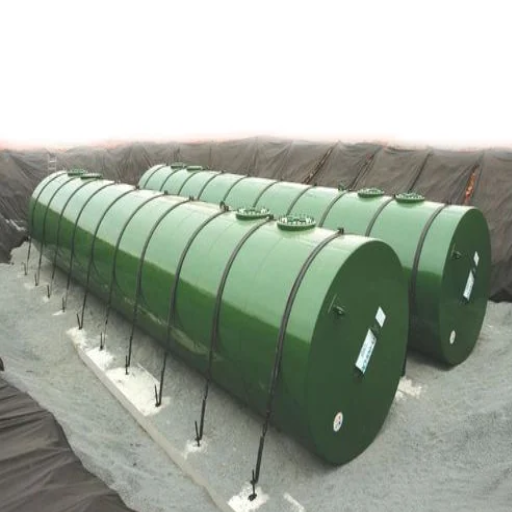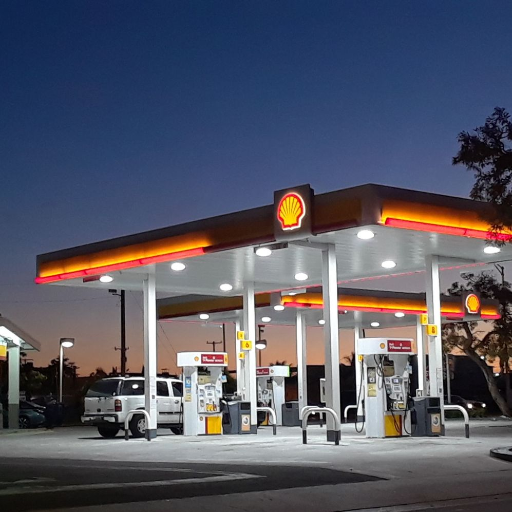When dealing with industrial and hazardous environments, safety is always paramount. Among the considerations is the type of your lighting: in other words, the more traditional lamp used in a volatile situation may become a hazard! LED lights thus enter this discussion: they are great because they are tough and energy-efficient, with better service options and broad applicability across various fields, but are they explosion-proof? The blog delves into the details of explosion-proof LED lighting, including its certification, technology, and importance in high-risk industries. By then, you will undoubtedly be able to evaluate the safety and reliability of LED lighting in critical applications.
Introduction to Explosion-Proof Lighting
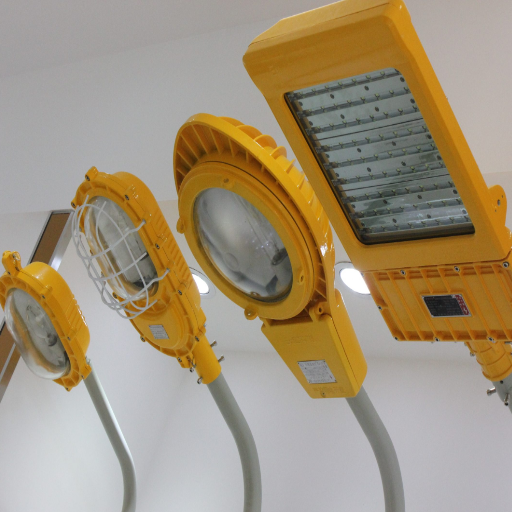
Explosion-proof lighting is specially designed to prevent the ignition of flammable gases, vapors, or dust in hazardous environments. These lights are made of tough materials with sealed enclosures to contain any sparks or heat that could cause an explosion. To be considered explosion-proof, the light must meet strict safety standards and be certified by respected bodies such as UL or ATEX. This makes explosion-proof lights integral to industries such as oil and gas, chemical manufacturing, and mining, where safety is of the highest priority.
What is Explosion-Proof Lighting?
An explosion-proof type of lighting is a specialized lighting solution designed to operate safely in an environment that may be hazardous due to the presence of flammable gases or vapors, combustible dust, or other materials that could ignite or explode. The lights are set up to prevent any internal explosion within the light fitting from spreading or igniting the surrounding atmosphere.
An explosion-proof light typically derives its strength and endurance from heavy construction materials, such as corrosion-resistant aluminum or stainless steel, ensuring that sparks cannot escape through the seals of the enclosures and that heat or other hot surfaces do not radiate to flammable substances outside. These are tested and certified to stringent safety standards, meeting the industry’s UL844 or ATEX ratings, ensuring utmost reliability.
Explosion-proof lighting finds one of its foremost applications in the oil and gas sector, where operations often occur in highly volatile atmospheres. Data show that within this industry alone, the adoption of explosion-proof lighting is expected to increase significantly, with some reports forecasting a market for explosion-proof lighting exceeding $800 million by 2030. The growth is mainly attributed to the LED technology, which makes an explosion-proof light more energy-efficient with longer life and lower maintenance costs. Due to its highly durable and practical nature, explosion-proof lighting is an ideal choice for use in chemical plants, refineries, mines, and emergency operations in hazardous areas.
With a combination of rugged design and modern engineering, explosion-proof lighting plays a crucial role in protecting both personnel and facilities in hazardous industrial environments.
Importance of Explosion-Proof LED Lights
Explosion-proof LED lights are life and safety reporters in hazardous spaces with a highly flammable atmosphere of gas, vapor, or dust. Compared to conventional lighting solutions, where the technologies have been questioned, LED technology is more energy-efficient and therefore less costly to run with optimal output. It stands to reason that LED lights can use about 75% less energy than incandescent lights and can last up to 25 times longer, arguing for reduced maintenance and operational disruptions.
Explosion-proof LED fixtures are the ideal choice for hazardous conditions, as they deliver the highest lumen output while maintaining high reliability and color rendering, thereby enhancing visibility for safer and more efficient working conditions. Industries such as the oil and gas fields, petrochemical industries, and mining industries are well served by these light fixtures. Since modern explosion-proof LED lighting systems generate negligible amounts of heat, they can be used in locations with highly volatile environments and are less prone to accidental ignition. The lighting fixtures are made from corrosion-resistant materials and feature advanced thermal management technology, making them highly durable in extreme environmental conditions.
Dimming controls and wireless connectivity add further levels of customizability and monitoring, allowing a bright LED to be directly integrated into industrial safety systems. With energy-saving aspects and rugged design, these intelligent lighting fixtures are essential for maintaining safety and productivity in high-risk industrial environments.
Typical Applications in Hazardous Locations
In terms of safety and reliability, explosion-proof LED lights are used in various hazardous settings. Examples of such settings include oil and gas installations, chemical processing plants, and mining operations. These lights are mounted in areas where a high concentration of flammable gases, vapors, or combustible dust may be present, as ignition can occur during daily operations. Behind entire refineries and offshore drilling rigs, and under these extreme conditions, unionized explosion-proof lighting has provided illumination, enabling workers to perform their tasks safely. Moreover, they find their usage in wastewater treatment plants and grain processing, where the buildup of explosive particles poses a substantial hazard. With the strength of durability and compliance with the most stringent safety norms, these lights provide an ultimate solution to safety concerns in hazardous locations.
Understanding Hazardous Locations
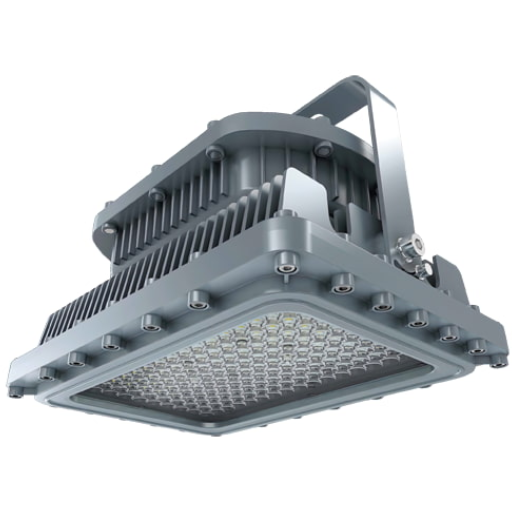
In a hazardous climate, flammable gases, vapors, dust, or fibers are present in sufficient quantities to pose the hazards of fire or explosion. Among others, such environments are found in the chemical manufacturing, oil and gas, mining, and agricultural industries. The prime focus in these locations is to eliminate ignition hazards and ensure that all equipment used meets the pertinent safety standards, such as OSHA or NFPA. A correct classification of an environment is key to applying the proper safety measures.
Definition and Classification of Hazardous Areas
Hazardous areas are those locations where the risk of fire or explosion occurs due to the presence of flammable gases, vapors, combustible dust, or ignitable fibers. Hazard areas are classified to ensure that appropriate safety measures are implemented. The classification may be divided into zones or divisions, depending on the regulatory system in use.
Definition: Hazardous areas are classified according to the likelihood and frequency of occurrence of electromechanical hazards resulting from the deposition of flammable substances. These categories exist so that the protective equipment required can be assigned.
Classifications:
Division System (North America):
Division 1: Flammable substances are present under normal conditions.
Division 2: Flammable substances are present only under abnormal or rare circumstances.
International Zone System:
Zone 0: Flammable gases or vapors are present either continuously or for long durations.
Zone 1: Flammable gases or vapors are likely to be in regular operation.
Zone 2: Flammable gases or vapors are unlikely to occur or are present for short durations.
Dust-Specific Classifications: The dust hazardous locations are also classified under “Groups” (e.g., Group E, F, G) to indicate the type of materials, such as metal dust, carbon dust, or grain dust, with which an explosion might be caused.
Determining hazardous zones is key to opting for the appropriate explosion-proof lighting as mandated by safety regulations to serve risk minimization in these areas.
Features of LED Explosion-Proof Lighting
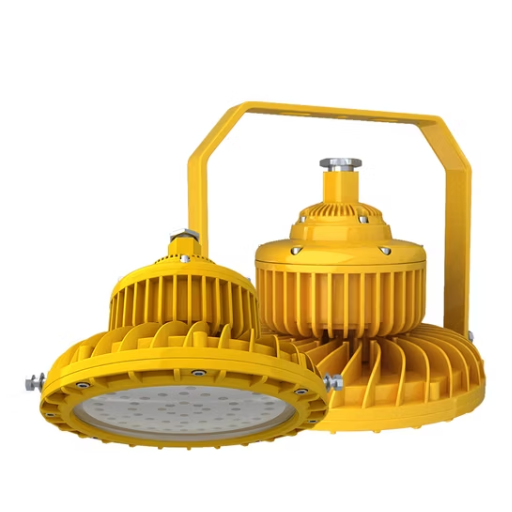
Technical specifications under these HTC include:
Sealed Housing: Provided with robust enclosures to seal against any dust, gas, or vapors.
Temperature control: Designed to operate at low temperatures so that they will not ignite any flammable materials.
Durable materials: Better life through corrosion-resistant and impact-resistant materials.
Safety Certificates: Provide genuine safety certificates, such as UL and ATEX, for use in hazardous areas.
Energy Efficiency: More energy-efficient, suggesting high-lumen output and less power consumption.
With these features, the LED explosion-proof lighting is suitable for industrial settings where safety is the primary concern.
Benefits of Using LED Lights in Hazardous Areas
Safety Advantage: LED lights operate at low heat in hazardous areas where explosive gases, vapors, or combustible dust co-exist. Unlike other systems that may become a source of ignition, LED lights significantly reduce such safety hazards, providing a secure working environment. Their rugged construction practically eliminates any chance of failure under extremely harsh conditions such as heavy vibration or sudden temperature changes.
Good Energy and Cost Savings: LED lights consume energy up to 60-80% less than traditional incandescent or halogen lighting. Such energy savings translate into substantial savings in energy cost bills for industrial plants, therefore aiding in reducing the overall carbon footprint. LEDs can save thousands of dollars in energy costs over the years of their life, based on the facility type.
Life Span Extension: LEDs have an average lifetime of 50,000 to 100,000 hours. This is much longer than any conventional lighting method. Therefore, they require fewer replacements, especially in hazardous environments where maintenance can be highly challenging and costly. Each replacement results in operational downtime and increased maintenance costs.
Better Light Output and Quality: LED lights provide high-quality illumination with better CRI values, enhancing visibility and thereby improving worker efficiency. They also perform directional lighting, therefore minimizing the light loss and focusing the illumination exactly where it is needed. This is an extreme advantage in environmental setups that require precision and clarity.
Ecological Benefits: Lighting using LED is considered environmentally friendly because LED lighting does not contain any harmful constituents, such as mercury. It produces less heat and, consequently, emits negligible amounts of ultraviolet (UV) or infrared radiation. Hence, eta for the creation of greener and sustainable industrial operations.
Resistance to Harsh Conditions: Severe industrial environments, such as exposure to dust, moisture, vibration, and mechanical damage, are some of the atrocities LED lights suffer. The robustness of LED lighting makes it a single option fit for industries such as oil and gas, mining, and chemical processing, where scenarios require extreme demand.
Customizability and Smart Features: Most modern LED lighting systems feature dimming capabilities, coupled with motion sensors and remote controls, to enhance both functionality and energy efficiency. These bright LED lights can automatically adjust according to operational requirements, either reaching peak illumination or dimming according to activity levels.
The aforementioned comprehensive benefits demonstrate why LED explosion-proof lighting remains the preferred option when safety, efficiency, and reliability must be prioritized in a hazardous industrial environment. Transitioning to LED technology is not just a practical decision, but one that can be envisaged as an investment for sustainable and innovative infrastructure.
Comparison with Traditional Explosion-Proof Fixtures
Explosions or any intimations of the style of lighting fixtures have realized several advantages of LED facilities. To begin with, LEDs are energy-efficient: they use much less energy to produce the same output as or even more output than a traditional type of lighting. Over time, this translates to huge savings on electricity bills. Secondly, the operational life span of LED fixtures far exceeds that of traditional fixtures. LEDs can operate for tens of thousands of hours and thus require little maintenance and downtime in dangerous atmospheres.
More stylish, resilient, and able to endure rough conditions, LED fixtures are selected in these areas. Traditional types may have faint filaments or glass pieces, whereas LEDs eliminate these weaknesses, being shock- and vibration-resistant. Just a little heat enters the system, and that lowers the prospects of either a fire or overheating in explosive atmospheres. Last but not least, LED technology further paves the way for advanced features, powering the lights instantly and allowing dimming options, which doubles the flexibility of operation and therefore improves safety. In comparison, LEDs take the cake when it comes to modernism, reliability, and value choices in hazardous setting lighting.
Key Specifications for LED Explosion-Proof Lights
Durability and Climate Resistance: The LED explosion-proof lights are manufactured with rugged, corrosion-resistant materials such as aluminum or stainless steel, ensuring longevity in harsh environments. They are designed to withstand extreme temperatures, vibrations, and impacts, thus remaining fully operative within highly volatile settings.
IP Rating: In line with their purpose, most LED explosion-proof lights have unusually high IP ratings, including IP66 and IP67, which protect against the ingress of dust, debris, and strong jets of water. Effects ensured that they are helpful in hazardous places, both indoors and outdoors.
Certifications and Compliance: These lights conform to strict international standards, including ATEX, IECEx, and UL certifications, ensuring they are certified for use in hazardous zones where flammable gases or dust may be present.
Energy efficiency: LED lights consume significantly less power compared to conventional lamps, reducing operational costs while providing a bright luminance. The efficiency of LEDs also means less heat emission, adding a layer of safety.
Light Output and Lifespan: Delivering astounding lumens with advanced optics, the light affords glare-free illumination with remarkable brightness. LEDs have an average lifespan of over 50,000 hours, thereby reducing the need for frequent replacements.
Customization Options: Some features of LED explosion-proof lights include instant start-up, dimming, beam adjustments, and various mounting options to suit different applications.
Marrying the above specifications, LED explosion-proof lights provide the highest level of safety and performance to the oil and gas industries, mining, and chemical processing.
Choosing the Right Explosion-Proof LED Fixture
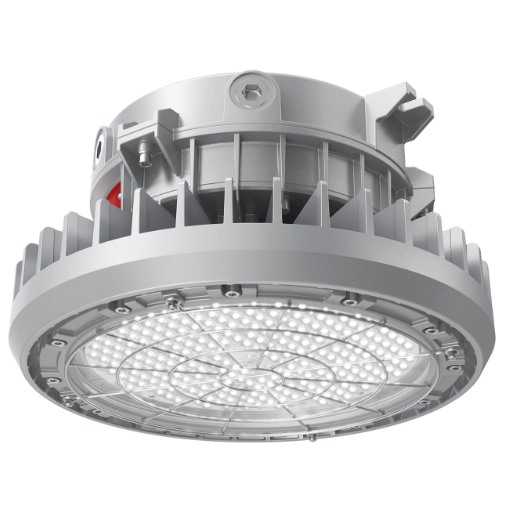
Essential factors to consider when choosing the right explosion-proof LED fixture:
Hazardous Location Classification: Ensure the fixture is eligible for installation in and complies with the environmental safety requirements of a dangerous location, such as Class I, Division 1 or 2.
Durability and Materials: Select fixtures made of high-quality materials, such as aluminum or stainless steel, to withstand corrosion, temperature extremes, and unfavorable environmental conditions.
Light Output and Efficiency: Evaluate lumen output and efficiency for lighting requirements while conserving energy.
Mounting and Installation Options: Consider the various mounting options and installation flexibility to accommodate different site arrangements and requirements.
Maintenance and Lifespan: Consider opting for LED fixtures that require the least maintenance and have the longest lifespan to minimize downtime and reduce operational costs.
When all risks concerning this factor are taken into consideration, the safety, efficiency, and reliability of the lighting solution in the hazardous environment are ensured.
Factors to Consider When Selecting a Fixture
Energy Efficiency: Opt for fixtures with top energy efficiency ratings, such as LED-type fixtures. As a general rule, LEDs consume 75% less power than incandescent bulbs, resulting in energy savings that accumulate over time. That means the most energy-efficient fixtures are those that reduce energy costs and also meet the sustainability goals of an organization by reducing their carbon footprints.
Durability and Material Quality: The fixture must be manufactured from corrosion-resistant materials, such as stainless steel or aluminum, when installed in hostile environments, including chemical plants or outdoor settings. IP65 or above-rated fixtures are considered water-resistant, as well as resistant to dust and temperature extremes, making them an excellent choice for harsh conditions.
Lighting Performance: The lumen output and color rendering index (CRI) of the fixture should be taken into consideration. A CRI above 80 means a color is displayed accurately, which is essential for fine work and safety inspections. Adjustable beam angles facilitate optimal light distribution for various purposes, providing maximum coverage with minimal shadows.
Control Options and Integration: Look for advanced lighting controls in the fixture, including dimming controls, motion sensors, and remote monitoring capabilities. Systems of bright lighting integrated with the BMS would manage energy so effectively that adjustments could be made in real-time, thereby improving overall operational efficiency.
Cost of Ownership: Consider the value of ownership and its related costs, which include initial expenses, energy consumption, and ongoing maintenance. According to studies, LED light fixtures are slightly more expensive initially but offer a lifespan of 50,000 hours, thereby significantly reducing replacement periods and overall costs.
Compliance and Certification: Ensure the selected fixtures meet local safety and energy regulations. Certifications such as UL, CE, or ATEX for hazardous locations confirm that the fixtures comply with strict safety standards, thereby reducing liability risks in sensitive environments.
By integrating these considerations into your selection process, you can invest in fixtures that deliver optimal performance, cost-efficiency, and reliability, while aligning with your organization’s operational goals.
Recommended Power Ratings for Different Environments
When selecting light power ratings, it is essential to consider the specific environment and its particular requirements. Below is a summary of recommended power ratings that cater to different environmental considerations:
Homes: To achieve proper illumination for homes, such as living rooms or bedrooms, 5- to 15-watt LED bulbs are efficient and provide sufficient brightness. That particular fixture is designed primarily for energy conservation rather than excessive brightness.
Office and Commercial Settings: Offices typically require power ratings of between 15 and 40 watts to produce uniform light suitable for productivity without glare. The higher power fixture would be required for large commercial rooms, depending on the design and layout.
Outdoor Settings: For outdoor illumination, such as in parking lots or on pathways, higher power ratings of between 40 and 100 watts for LEDs are typically used to provide the visibility required for safety under limited lighting conditions.
Industrial and Hazardous Locations: In warehouse or hazardous environments, these areas require specialized fixtures ranging from 100 to 300 watts and even higher, depending on the application. These fixtures should also be safe with certifications such as ATEX or UL addressing operational hazards.
By matching power ratings to the specific needs of each environment, you ensure optimal energy efficiency, safety, and functionality. Continually evaluate light distribution, energy consumption, and industry standards and codes before finalizing your decision.
Examples of 40W LED Explosion-Proof Fixtures.
A few select and noted 40W LED explosion-proof fixtures hold the reputation of producing reliable performance in harmful environments:
XYZ Lighting 40W Explosion-Proof LED Fixture: With all its energy-efficient heft and power, this unit is meant for Class I, Division 1 locations. It has a luminous flux of 4,800 lumens and a corrosion-resistant aluminum housing. It is UL and ATEX certified, ensuring it meets the required safety standards.
ABC Industrial 40W Hazardous Area LED Light: This explosion-proof fixture is compact and versatile. Excellent light distribution is possible because of the wide beam angle used. Energy consumption is low, while brightness is on a higher scale. The product is certified for use in Zones 1 and 2.
DEF Safety 40W Explosion-Proof LED Floodlight: Designed for harsher environments, this fixture features a tempered glass lens and a heavy-duty base to withstand abuse. NT offers multiple mounting solutions with an efficacy of above 120 lumens per watt, ensuring it meets various industrial needs and conforms to ATEX and UL standards.
When choosing an explosion-proof LED fixture, consider the certification, light output, and design that best suit your specific needs for optimal performance and safety.
Installation and Maintenance of Explosion-Proof LED Lighting
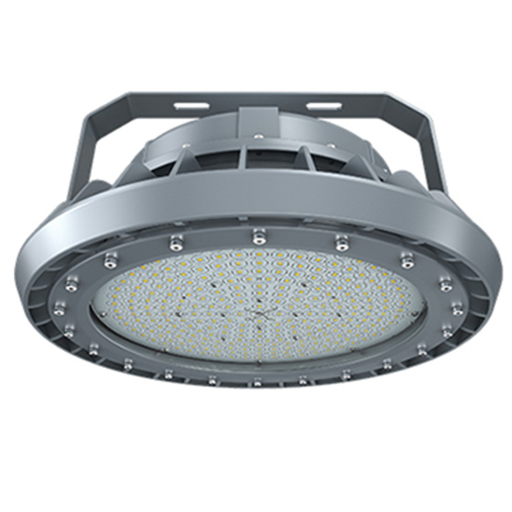
Careful installation is the first step to maintaining the performance and safety of explosion-proof LED lighting. Maintenance: From regular inspections to occasional cleaning, here is all that needs to be done:
Installation: First, ascertain that the fixture is certified for the said hazardous environment. The mounting brackets and all connections must be fully secured, using the set of tools as recommended by the manufacturer. Cables and conduit connections must be sealed appropriately to prevent the entry of dust, dirt, or moisture.
Maintenance: Inspect the lamp periodically for any damage, including cracks in the glass lens, corrosion in the housing, or any other issues that may be damaging. Replace necessary parts as needed. Cleaning the lens and housing with a non-abrasive material will help prevent a decrease in light quality. Always ensure the power is off when performing any maintenance.
By following the manufacturer’s instructions as well as local safety laws and codes, you will prolong the lifespan and optimize the reliability of your explosion-proof LED lighting systems.
Best Practices for Installation in Hazardous Locations
Follow these best practices when installing explosion-proof LED lighting in hazardous locations. The first step is to understand hazard zones and classifications, identifying the site-specific dangerous area classification (Class I, II, or III; Division 1 or 2; zone-specific ratings) to select the most suitable lighting fixture. An applicable standard, such as the NEC, IEC, or ATEX, must always be used in the selection.
Pre-Installation Inspection: Ensure that all fixtures are certified for the intended hazardous location and that such certification is verified before installation. Ensure that all components, including gaskets, seals, and connection points, are intact to guarantee safety.
Proper Mounting and Positioning: Mount fixtures in a manner that prevents vibration and places them in situations where they will not be exposed to extreme heat, chemicals, or physical impact more than necessary. Install the brackets and hardware recommended by the manufacturer.
Cable and Conduit Management: Seal conduits and electrical connections adequately to prevent dust, gas, or vapor ingress. Use explosion-proof junction boxes and comply with local regulations concerning wiring practices.
Observe Maintenance Schedules: A regular maintenance program must be planned and should include cleaning the lenses, re-tightening or replacing seals as needed, and inspecting the units for wear or corrosion. This is necessary for the fixture to perform reliably over time.
According to Manufacturer and Regulatory Guidelines: Always comply with manufacturer instructions and the governing codes and standards for hazardous locations. Make sure that workers are well-trained in the handling and installation of these specialized systems.
On observing these best practices, one can ensure maximum safety, performance, and compliance when installing lighting in hazardous environments.
Maintenance Tips for Longevity and Safety
Perform Regular Inspections: Schedule periodic visual inspections to monitor for any signs of damage, corrosion, or debris accumulation that may interfere with the lighting systems. Concentrate on seals, enclosures, and wiring.
Cleaning of Fixtures Periodically: Dust settling and dirt laden with grime making their way into light fixtures can hamper the efficiency of these lighting systems. Clean the light fixtures with suitable cleaning methods and non-abrasive materials to keep them working in top condition.
Proper Ventilation: Avoid overheating by ensuring adequate ventilation around the fixtures. Blocked vents tend to restrict airflow, which in turn reduces the lifespan of the lighting system and may even lead to its failure.
Replacement of Worn or Damaged Parts: Replace defective bulbs, gaskets, or other components immediately to prevent further damage to the lighting system and to avoid potential safety hazards. Use certified replacement parts approved for hazardous locations only.
Monitor Environmental Changes: Temperatures, humidity, or suspended particulates are elements that can change lighting systems. Can your maintenance schedule accommodate the environmental conditions in a hazardous location?
Test Emergency Lighting Systems: Periodically, emergency lights should be tested to ensure they function correctly and to verify their reliability in the event of an actual emergency. These tests should be performed at intervals recommended by each manufacturer.
Document Maintenance Activities: Document inspections, repairs, and replacements. This enables the effective tracking of a system’s performance over time, ensuring compliance with regulatory and contractual requirements.
Following this maintenance procedure prolongs the life of lighting systems, promotes safety, and sustains compliance with industry and regulatory standards.
Common Issues and Troubleshooting
A common issue I encounter is dimming or flickering lights. I usually check for loose connections or fix a faulty bulb. If a light does not come on at all, I first check for faults in the wiring or the fuses. I also resolve moisture buildup by making sure seals are sound and everything is installed cleanly. For more complex issues, I consult the manufacturer’s manual or hire a professional to ensure that everything is fixed correctly.
Reference Sources
“Research on LED Fishing Light”
“HEALTH RISKS OCCURRING WHEN COLOR IS PERCEPTED UNDER LED LIGHTING”
Frequently Asked Questions (FAQs)
What is explosion-proof LED lighting?
Explosion-proof LED lighting refers to lighting fixtures specifically designed to operate safely in hazardous locations where flammable gases, vapors, or dust may be present. These lights are designed to prevent internal explosions from igniting hazardous external materials, ensuring safety in various industrial environments.
How do I ensure safety in hazardous locations with explosion-proof lights?
To ensure safety in hazardous locations, it is crucial to select lights that comply with the National Electrical Code (NEC) standards and regulations. This includes determining the appropriate class and division for the area, such as Class I for flammable gases or Class II for combustible dust. The lights should also be rated for the specific hazardous materials present.
What are the classification and division requirements for explosion-proof lighting?
Explosion-proof lighting is classified based on the presence of hazardous substances. Class I areas involve flammable gases, while Class II areas deal with dust. Each class is further divided into divisions; Division 1 indicates the presence of ignitable materials under normal operating conditions, while Division 2 signifies that these materials are present intermittently. Understanding these classifications is crucial for selecting the right lighting solutions.
Can I use LED explosion-proof lighting in outdoor hazardous areas?
Yes, LED explosion-proof lighting can be used in outdoor hazardous areas, provided that the fixtures are rated explicitly for such environments. These lights must comply with relevant standards and regulations, ensuring they can withstand environmental factors while maintaining safety and performance.
What types of hazardous materials can be used with explosion-proof lighting?
Explosion-proof lighting is designed for use in areas where various types of hazardous materials are present, including flammable gases, vapors, and combustible dust. It is essential to identify the specific types of dangerous substances in the workplace to select the appropriate lighting fixtures that meet safety requirements.
Are there significant energy savings with LED technology compared to traditional lighting?
Yes, LED technology uses much less energy compared to traditional incandescent or fluorescent lighting. This results in significant energy savings over time, making LED explosion-proof lighting a cost-effective and environmentally friendly choice for hazardous locations.
What is the lumen output of a typical 40W LED explosion-proof fixture?
A typical 40W LED explosion-proof fixture can provide a high lumen output, often ranging from 3,500 to 5,000 lumens, depending on the manufacturer and design. This high lumen output ensures adequate illumination in hazardous areas while maintaining energy efficiency.
What are the advantages of using LED explosion-proof lighting solutions?
LED explosion-proof lighting solutions offer several advantages, including longer lifespan, lower energy consumption, and reduced heat output compared to traditional lighting. Additionally, they are designed to withstand harsh conditions, providing reliable performance in hazardous locations.
How do I choose the proper explosion-proof lighting for hazardous areas?
Choosing the proper explosion-proof lighting for hazardous areas involves understanding the classification and division requirements, the types of hazardous materials present, and the specific lighting needs of the space. Consult with a lighting expert to ensure compliance with standards and to select fixtures that ensure safety and effectiveness.

